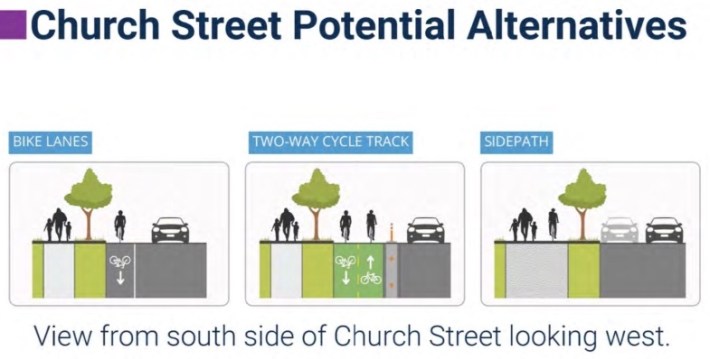Annie Weinstock is the regional director for the U.S. and Africa at the Institute for Transportation and Development Policy.

Last week saw the quiet death of the misguided, Koch brothers-funded Tennessee Senate Bill 2243, which would have effectively banned real bus rapid transit in Tennessee. The Senate’s outrageous overreach, attempting to prohibit transit from using dedicated lanes, was conferenced with a far milder House bill, and the compromise allows the use of separate lanes -- including the center-running transit lanes the Amp BRT project intends to use. However, the bill requires such projects to get approval from the state legislature, even if they don't use any state funding.
The compromise deal still spells trouble for the 7.1-mile Amp BRT line, but it sets a far less dangerous precedent than the Senate bill. The Senate’s version, one of the most anti-mass transit pieces of legislation in recent memory, would have hurt Nashville and other Tennessee cities environmentally, socially, and economically.

But even though the Senate bill did not fully succeed, this coordinated attack on high quality transit could still have national implications. When the Tennessee Senate first took up the bill, it raised eyebrows nationally for its unusually specific prohibition on "any bus rapid transit system using a separate lane, or other separate right-of-way, dedicated solely to the use of such bus rapid transit system." Such a direct attack on BRT from a state authority is unprecedented, and is a clear threat to the ability of one of Tennessee’s major cities to remain competitive.
The U.S. is still woefully behind European, Asian, and Latin American cities in building modern and efficient transport innovations such as BRT and bike-share. In the past decade, U.S. cities have finally been waking up to the fact that in order to be modern and economically competitive, they have to make their transportation systems cleaner, more attractive, and more efficient. With much of the electorate opposed to increased taxation, cost-effective BRT represents one of the few areas where the U.S. has made progress.
When done right, BRT can deliver the speed, comfort, and capacity of a rail-based system, at a fraction of the cost and time that a metro or light rail requires. While true BRT includes many components, one of the most essential is alignment in the median of the road. Without median alignment, the other essential elements, such as dedicated lanes and intersection treatments, are much less effective. A curb-aligned bus lane has to compete with parking cars, pedestrians, cyclists, delivery vehicles, and right-turning vehicles. Placing the busway in the center of the road avoids most of these conflicts and allows BRT vehicles to run much more smoothly. Banning median-aligned transit lanes, for BRT or LRT, ensures that any system created would bring far fewer benefits.
In Nashville, the Amp project’s 7.1 mile BRT corridor connecting downtown Nashville, Vanderbilt University, and the Five Points neighborhood in East Nashville, is largely supported by the community. Plans for the Amp rank as silver on The BRT Standard, an internationally recognized system for scoring BRT projects against the best BRTs around the world. As U.S. cities such as Cleveland and Las Vegas have discovered, a silver or bronze BRT can encourage investment and commerce along the corridor.
BRT in the U.S. has bi-partisan appeal. Retired Republican Senator George Voinovich of Ohio, who had previously been governor of Ohio and mayor of Cleveland, was the political champion behind Cleveland’s HealthLine BRT. The conservative Reason Foundation has also been supportive of BRT. The recent efforts by the Koch Brothers signal an orchestrated attack not only on Nashville’s Democratic mayor, but also on pro-BRT Republicans.
It takes political courage to allocate road space for transit, especially in a city like Nashville, where most people are dependent on cars. It’s a sad statement that the only role the state could think to play in this effort was to undermine Nashville’s local sovereignty and promote heavy-handed government regulation to stifle city-led innovation.
Even in its weakened form, the Tennessee law threatens to block BRT in Nashville, setting a terrible precedent for every other state with cities planning BRT, or even light rail or streetcars. This bill, if copied by other states, could essentially halt this trend, sending U.S. cities spiraling back into the car-dependent 1960s while the rest of the world moves toward a more sustainable future less dependent on scarce oil reserves.
Elected officials should take a close look at what Cleveland’s BRT did for the Ohio economy before enacting similar bills in their states. Cleveland's BRT helped to bring $5.8 billion into the city, a lot of which was new investment from outside the state. If the Koch brothers’ “Americans for Prosperity” is actually concerned with American prosperity, it should take note.






